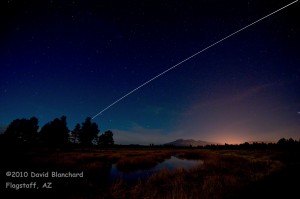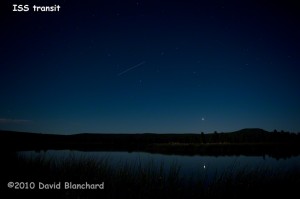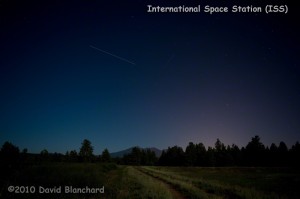An era has come to an end as the NASA space shuttle Discovery landed earlier this week after a successful mission to the International Space Station (ISS). This was the last flight for Discovery and it will now be retired to a museum.
After Discovery undocked from the ISS their orbits began to separate with the shuttle flying across the sky a few tens of seconds earlier than the ISS. On the night before returning to Kennedy Space Center, the ISS and Discovery made two evening twilight passes across the southwestern United States.

The first pass came early in the evening with a still bright twilight sky. The ISS and Discovery only rose to about 17 degrees above the horizon and this made it easy to capture an image with the San Francisco Peaks and the Kachina wetlands in the same photograph.

About 95 minutes later a second pass occurred. This time the two spacecraft arose from the western sky and climbed higher towards the crescent moon before disappearing into the Earths shadow.
Only two more shuttle missions remain and then, truly, it will be the end of an era.






